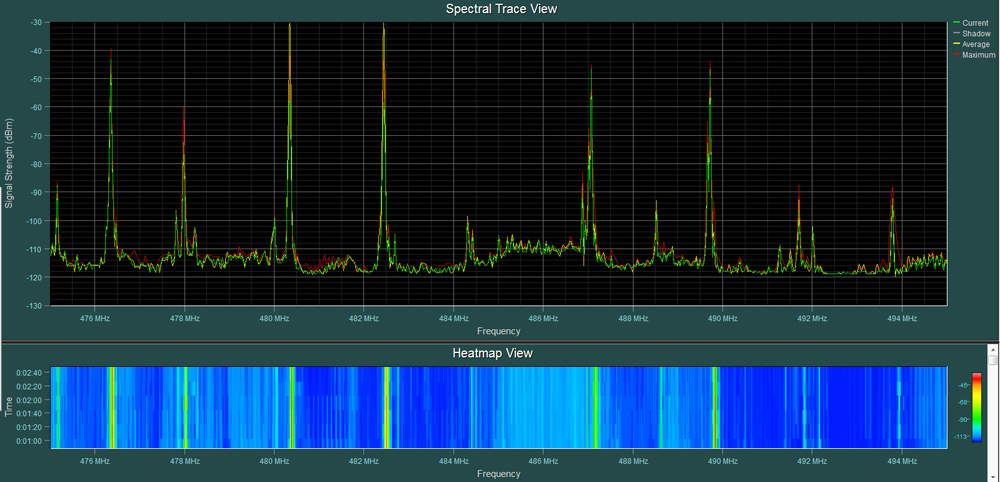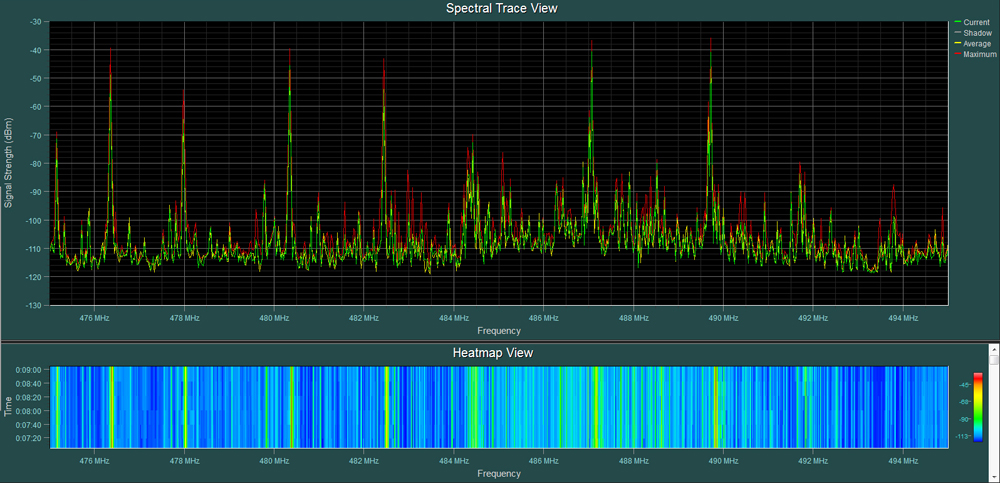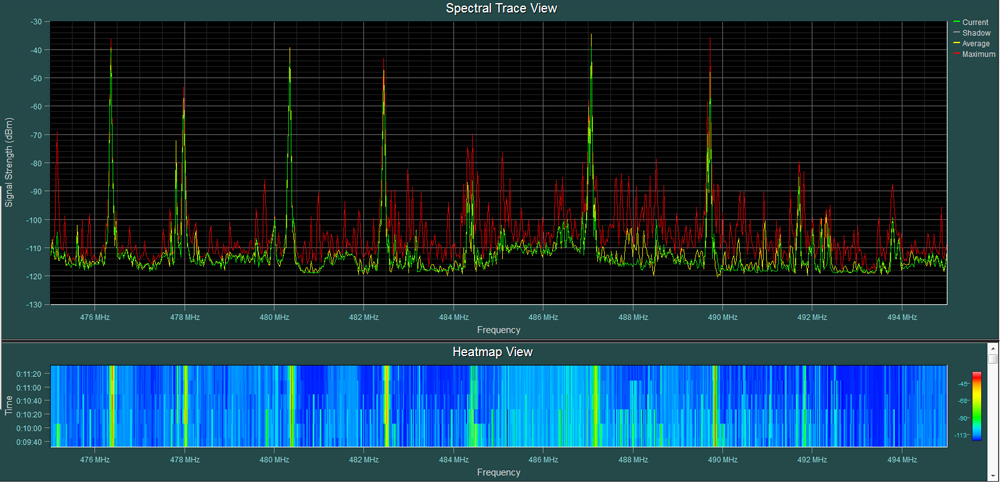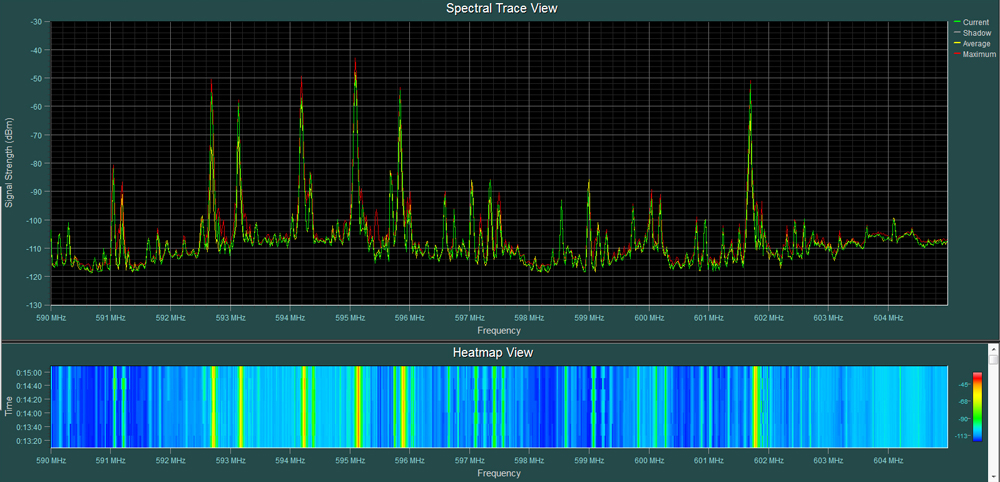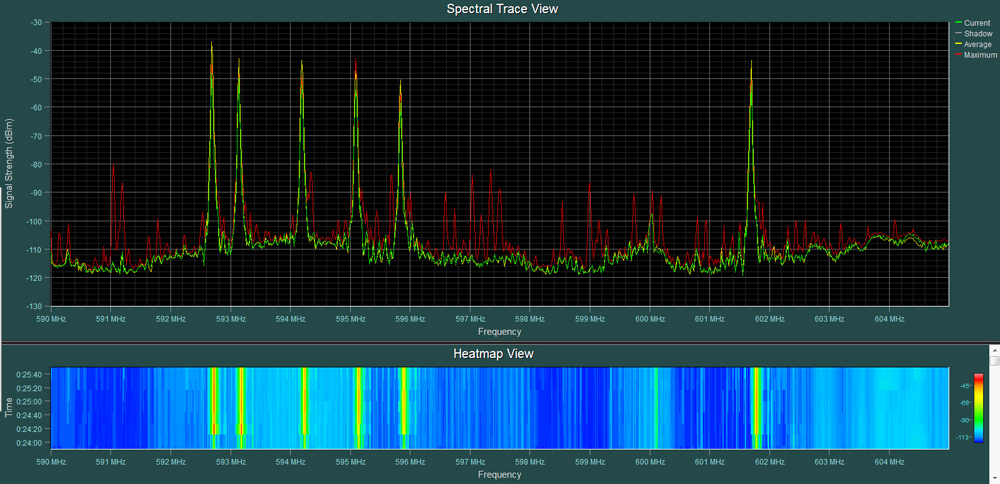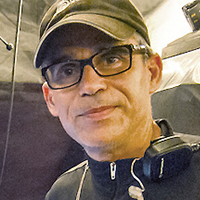One of the main causes of RF (radio frequency) interference is intermodulation products created by our own wireless equipment. In this piece, I will outline some of the common setup and handling errors that contribute to this problem.
First up is increased noise floor and intermodulation (intermod or IM) products due to transmitters being in very close proximity. If you work with a single band and just put mics up on stands every day, you might not encounter this.
But at festivals, broadcast events, churches and theatrical productions, there are situations where a number of active transmitters (i.e., microphones, belt packs) must be marshaled somewhere and handed out to talent at various intervals.
Figures 1A, 1B and 1C shows the effects of handling six handheld wireless microphones in different ways. (All data charted with an Invisible Waves X PC-based RF spectrum analyzer from Kaltman Creations.)
In Figure 1A, they’re on stands, about 4 feet apart. In Figure 1B, they’re lying side-by-side on the fader bay of a console. In Figure 1C, they’re back on stands, with the red trace showing IM and increased noise floor (the “after” result).
We can clearly see that it goes from a very clean RF spectrum to a very noisy RF spectrum, and then back again. There are several ways to deal with this common problem:
—If laying the transmitters out on a table (or a road case), arrange them so that the antennas are pointing in opposite directions for each mic (one up, one down, etc.).
—If this is something you encounter regularly, invest in some aluminum loaf pans and place the transmitters in them, with the antenna end in each pan.
—Monitor engineers who keep their lead vocal mic and the spare on the console should place them either windscreen-to-windscreen, or both facing the same way, so the antenna end of one is facing the windscreen of the next.
The same problem occurs with in-ear monitoring systems, because out of necessity there are usually a number of transmitters in close proximity to each other. The trick here is to use antenna combiners, which have varying degrees of intermod suppression built into them.
Figures 2A and 2B shows a rack of six IEM systems with whip antennas fitted (Figure 2A) and then routed through an antenna combiner (Figure 2B). Note that Figure 2B is also the “after” shot and clearly shows all of the intermod products in red.
Five of the IEM frequencies shown are on top of a weak DTV (digital television) channel, channel 34 in this case. This accounts for the 6 MHz wide “hump” that the five channels are sitting on. I didn’t program or coordinate any of the frequencies shown in these plots, but merely grabbed a couple of racks that had come back from a show and analyzed what was already programmed.
Careful Arrangement
Antenna placement is key – in particular, it’s really important to keep transmit (Tx) and receive (Rx) antennas separated. This is because a Tx antenna in close proximity to an Rx antenna will desensitize it. This works in much the same way as the human eye or ear: if you’re trying to look at a dim object like a distant star, and there’s a bright light shining in your eyes, they’re desensitized by the bright light. So an IEM antenna right next to a mic antenna is going to make that antenna less sensitive to a mic on the far side of the stage.
What to do? Assuming you’re using cardioid directional antennas (a.k.a., “paddles,” “shark fins,” helical, circular-polar, etc.), place the Rx antennas behind the Tx antennas. This seems counterintuitive in that the receive antennas are being placed farther away (slightly) from the transmitters, but it puts them in the “null” area of the Tx antennas and therefore the area of least interference.




